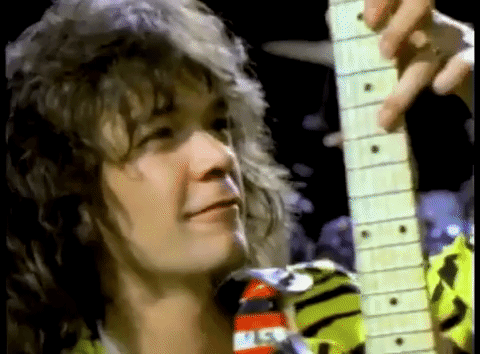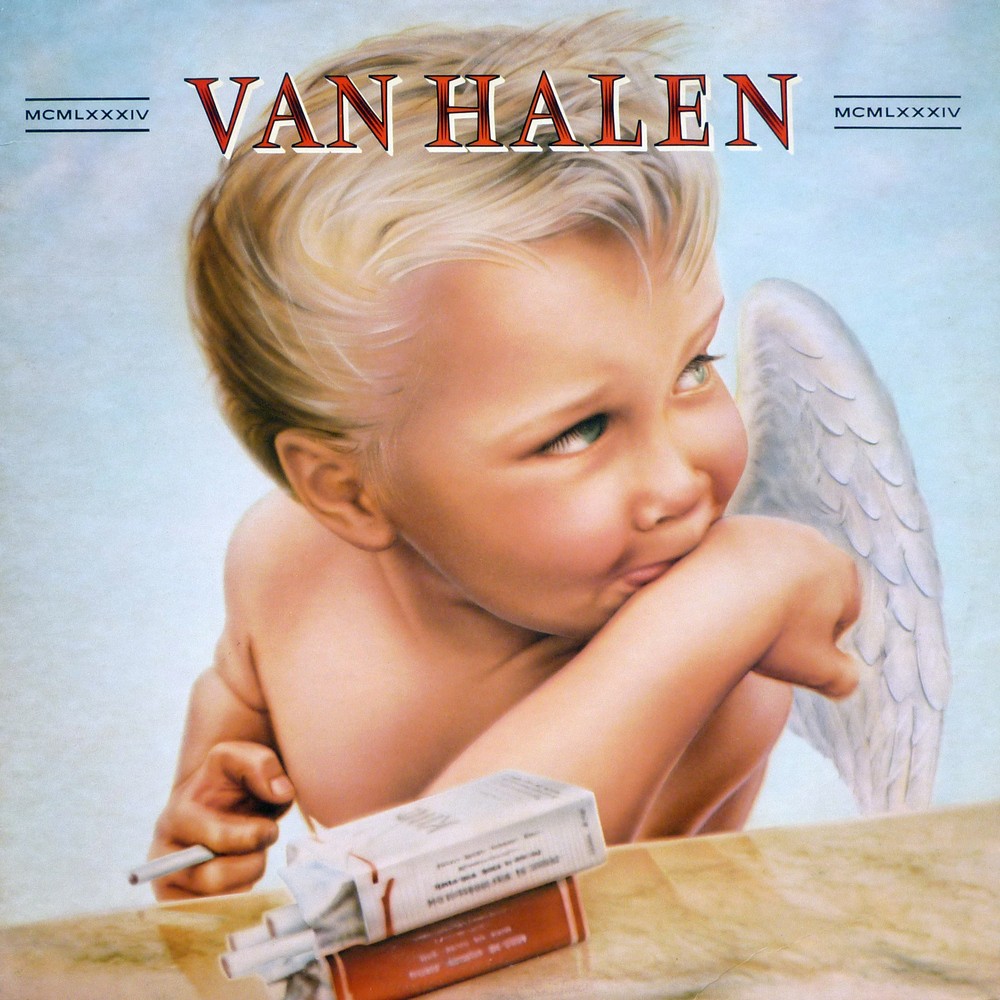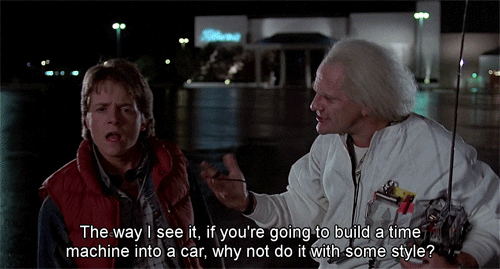In Memoriam: The Hacker Edward Lodewijk van Halen
- 8 minutes read - 1537 words
October marked the passing of one of the greatest guitar players ever, a true innovator to the form, Edward Van Halen. As I pondered his death, I realized how much he had been a part of my life, first as an 80’s icon, then as an aspirational goal for a suburban strummer, and, ultimately, as a craftsman and fellow hacker.
Van Halen (the Band)
There was a day in 1984 when I went over to my cousin’s house in Houston, Texas. Some eight years or so older than me, she was that perfect 80’s “I want my MTV” generation child: she took me to see “E.T.” (and took us to the bathroom during the sad part), drank Mr. Pibb, gave me a “Star Wars” poster, and had a banana-yellow skateboard. In fact, she even bears the most-common girl’s name of the year she was born. At any point you needed a cute extra or a best friend to play opposite Molly Ringwald, you could have swapped in my cousin.
Anyway, on that afternoon, she showed me her newest vinyl record, the one with the little boy angel smoking a cigarette on the cover, Van Halen’s 1984.

The 1984 cover by Margo Nahas
Or, for me, the album that gave us “Jump.” As I recall she cued up this smash of a single and I heard those fateful opening synths I’d heard before. I can say that that was probably the moment that I discerned that the music on the radio could be bought

“Jump’s” colorful video with costumes, antics, and that signature “Hey check this out!” grin from this “Eddie Van Halen” made me love the song even more. It has a powerful, kinetic chorus (“Jump!”), acrobatic vocals mixed with humorous patter, a break-in-style visceral guitar solo that resolves to something like a soaring cantata before it goes right back to power pop. That was the Van Halen (band) signature: pop music for feeling good that never overplayed the virtuosity of the composition, the synthesizers, or the guitar work. This model of restraint and “serve the song above all else” was honored both by Edward as well as his brother Alex for the band’s entire duration.

Eddie Van Halen’s Synthesizer
The Idol
In the early 90’s, I got into playing the guitar. I grew up with a beautiful Baldwin baby grand piano on our formal sitting room, and I really enjoyed my early lessons in the instrument. However, after a change in teachers I realized my discipline level, or lack thereof, was not a match for her expectations. It lead to lessons becoming a drag (I’m sure) for her and for me. I gave up the instrument. About this time, I was able to start playing saxophone in junior high band. In this endeavor I was neither particularly dedicated nor particularly talented. However, this period overlapped with a growing interest in guitar-dominated metal (the best years of Metallica, ending in 1989) or guitar-heavy experimental work (Steve Vai, Joe Satriani, Eric Johnson).
Regardless of their genre, every guitarist had to acknowledge Eddie Van Halen as an inspiration and a technician. It was beyond discussion. Even other more-technical shredders had to acknowledge Eddie and give him his due as a songsmith, guitarist, keyboardist, and generally pretty cool guy.
About this time I got my first CD player. It was a single-disc (no cartridge!) loader that could give you 8 to ten songs. It might not be a surprise, but the first longbox* CD was the one with the smoking cherub, “1984.”
1984 served as an entree into the full back-catalog of the early years. I consider Van Halen “I”, “II,” and “Fair Warning” all to be blistering demonstrations of the band’s amazing rock sound that had been honed by constant performance all around Southern California: from the Sunset strip to any high schooler’s backyard party. Van Halen was always there to play. Everyone who touches an electric guitar eventually wants to try to play Edward’s solo-defining piece “Eruption,” and I was no different. Decades on, when you finally get to the closing “tapping” passage, you can’t help but grin too. Even if you’re on weaker amps with worse pickups the ascent into a dive-bomb whammy bar finish definitely gives you the feeling that you’re getting a drop of ambrosia from the gods’ table.
The Craftsman and Hacker
All the quotes below were written by the man himself and published in Popular Mechanics in 2015. In these abstract principles I see the behaviors that any maker (luthier, programmer, knitter) recognizes as that skill Arachne was so overflowing with: techne.**
Always Be on the Grind
“If something doesn’t do what you want it to, there’s always a way to fix it.”
While Eddie looked pretty easy-going in that “Jump” animation above, he never held back from doing the work. It must be that classic Dutch Calvinist thing. With work and prudent savings (look in the article to see him talk about his Dutch zuinigheid: thriftiness).
In the interview at the bottom of the post, one of the audience asks Ed how to start a band in this era of social media, absence of airplay, absence of MTV and his answer boils down to: play anywhere, advertise on all the means available, and get word-of-mouth going. For Eddie, success was an effect of work, above all, not cleverness.
Infinite Incremental Improvements
“I knew what I wanted and I just kept at it until I finally got there.”
Anyone who’s ever bandaged some server code in the wee hours with a shell script, anyone who’s ever figured out something clever to bypass a broken alternator, anyone who’s ever made a substitution in a pinch for a dish based on intuition and history knows this sentiment — we all recognize this sentiment.
In his life, Van Halen earned several patents. I think this ideal was a key driver.
Cheap Prototypes for Inspiration
Ed acquired a European amp (cheaply, and with the wrong voltage) and needed a way to adjust its current.
There were these cheesy light dimmers in the house, and I hooked it up to one of those.
By doing this, Ed reasoned he would be able to take a Marshall amp work in the US by controlling the current with a knob. It turns out a dimmer switch from the house was not correct and he blew out the house’s electrical system. He was stuck, but he knew to…
Ask for Help
Ultimately Ed went down to a spot in Pasadena where he could ask about how to manipulate the current:
…so I went down to a place in Pasadena and asked if there was some kind of industrial-size variable transformer that would let me adjust voltage, and they introduced me to the Variac. It’s just a huge light dimmer. I plugged it into the amp and controlled the voltage from that. That became my volume knob. I would set the voltage depending on the size of the room we were playing, getting all that feedback at any volume.
By being willing to say “I’m just a long-haired guitar player who edits guitars with screwdrivers,” Ed got the help he needed to keep pushing his ideas forward. That takes humility. I wonder what those hardware store people thought a few years later when that kid was grinning at them on MTV.
Make the Time Machine from a DeLorean
Ed’s “mad science” adventures recounted here put me in mind of another great (fictional) tinkerer: Doc Brown of the Back to the Future franchise.

Aesthetics count in the final iterations
When my guitar was black and white, I cut out my own pickguard so it would cover the holes from the pickup I’d removed. But when I painted red on top of the black and white, which is how it is now, it didn’t look cool with that black pickguard. It covered most of the paint job.
The famous red, white, and black striped guitar that is his signature creation achieved its patched-together look by being, well patched together. Instead of fighting what the frankenbeast guitar wanted to be, Ed embraced it and exaggerated its natural asthetic.
Among the Gurus
Many of his great inventions happened while he was still very young. It was a compliment that a master guitar-maker saw in Ed another master in the making. It’s a mark of distinction that Les Paul once told Ed:
There are only three guys who know how to build a guitar: you, me, and Leo Fender.
More
For more of the maestro on the subject of work, craftsmanship, and performance, I can’t recommend this interview enough.
Final Thoughts
Edward left behind a rich legacy of creativity and art. He should have had many more years with us, but I’m thankful that I got to grow up with his icon beckoning a way to music, creativity, and a laughing grin.
Footnotes
- *: When they were first released, CDs came in long cardboard boxes called “longboxes” that were ecologically wasful. In the 1990’s longboxes were retired but they were long vertical pictures of the album cover.
- **: The myth of Arachne and Athena.